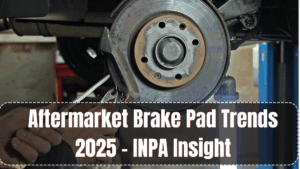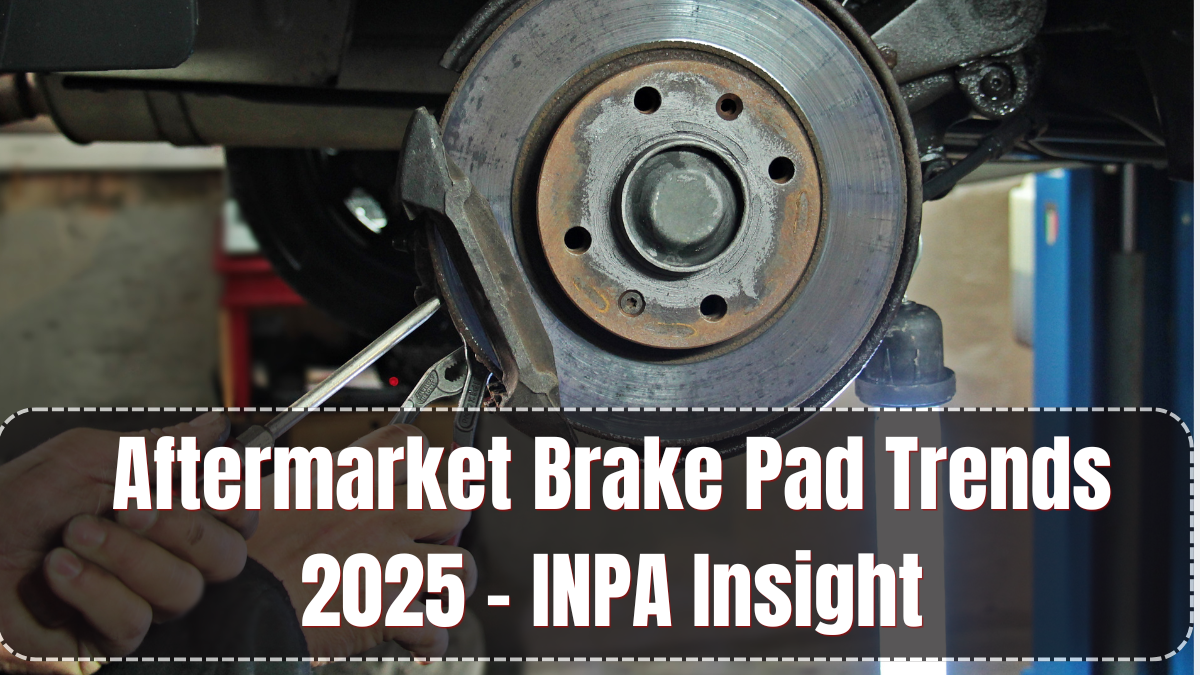In 2025, the Indian automotive aftermarket is witnessing significant changes in braking technology, driven by INPA’s updated safety and material standards. The Aftermarket Brake Pad Trends 2025 reflect a growing emphasis on eco-friendliness, durability, and consistent stopping power across both ICE and EV vehicles.
As urban traffic increases and vehicles become faster and heavier, brake pads need to perform flawlessly under various driving conditions. Whether you’re a daily commuter or a garage owner, keeping up with the latest brake pad trends is essential for safety and performance.

What’s Driving the Change in Brake Pad Design in 2025?
The Aftermarket Brake Pad Trends 2025 are shaped by three key factors:
-
Stricter safety regulations issued by INPA and ISO
-
Demand for noise- and dust-free braking
-
Compatibility with electric vehicles and regenerative braking systems
Brake pad manufacturers are now using advanced materials that offer improved friction without wearing down rotors too quickly, while also reducing pollution caused by brake dust.
New Brake Pad Materials Gaining Popularity
Here are the top material innovations defining the Aftermarket Brake Pad Trends 2025:
-
Copper-Free Ceramic Pads: Now standard, these pads reduce rotor wear and are environmentally friendly.
-
Kevlar-Reinforced Composites: Provide longer life and stable performance in extreme conditions.
-
Hybrid Organic Formulas: Made of resin, rubber, and glass fibers—offering a balance of grip and silence.
-
Low-Metallic NAO (Non-Asbestos Organic): Deliver consistent braking for heavy SUVs and luxury sedans.
Most modern brake pads come with wear indicators, heat insulators, and corrosion-proof shims.
Key Features to Look for in 2025 Brake Pads
The Aftermarket Brake Pad Trends 2025 reveal a shift in consumer expectations. Buyers now prefer pads that offer:
-
Silent braking (minimum squeal)
-
Low brake dust on alloy wheels
-
High-temperature tolerance
-
Quick bedding-in time
-
Compatibility with ABS and disc brake systems
Whether you’re shopping for front-wheel, rear-wheel, or all-wheel braking setups, these features are now becoming standard.
INPA Guidelines for Brake Pad Certification
In 2025, the Indian National Parts Authority has made it mandatory for all brake pads sold in India to carry INPA-grade quality marks. According to the latest directive:
-
Each brake pad must be tested for fade resistance, wear rate, and thermal stability
-
Pads must display batch traceability QR codes
-
Friction materials must meet green compliance levels
-
Manufacturers must submit periodic lab test reports to retain approval
These steps ensure end users receive high-performing and safe braking products.
Who Benefits from These New Trends?
The Aftermarket Brake Pad Trends 2025 offer value for:
-
Car owners seeking better performance and lower maintenance
-
Garage mechanics needing reliable and easy-to-install components
-
Fleet managers optimizing long-term vehicle operating costs
-
EV users requiring quieter, heat-tolerant pads to pair with regenerative braking
Modern pads are also designed to prevent rotor warping, one of the major reasons for vibration and brake fade.
FAQs
Are copper-free brake pads better than metallic ones?
Yes. Copper-free pads reduce environmental harm, produce less dust, and offer quieter braking, especially in urban driving.
How do I know if my brake pads follow INPA standards?
Check the product packaging for an INPA certification mark and scan the QR code to verify its batch and material compliance.
Can I use 2025 brake pads on an older vehicle?
Yes. Most new aftermarket pads are designed to be backward compatible with vehicles manufactured after 2012.
How often should I replace brake pads?
Typically every 30,000 to 60,000 km depending on your driving style. Look for signs like squealing, vibration, or reduced stopping power.
Do these new pads cost more?
Slightly. The new materials and certification add 5–10% to the cost, but they last longer and offer superior safety.
Click here to know more.
